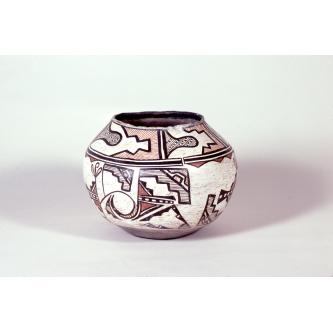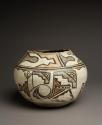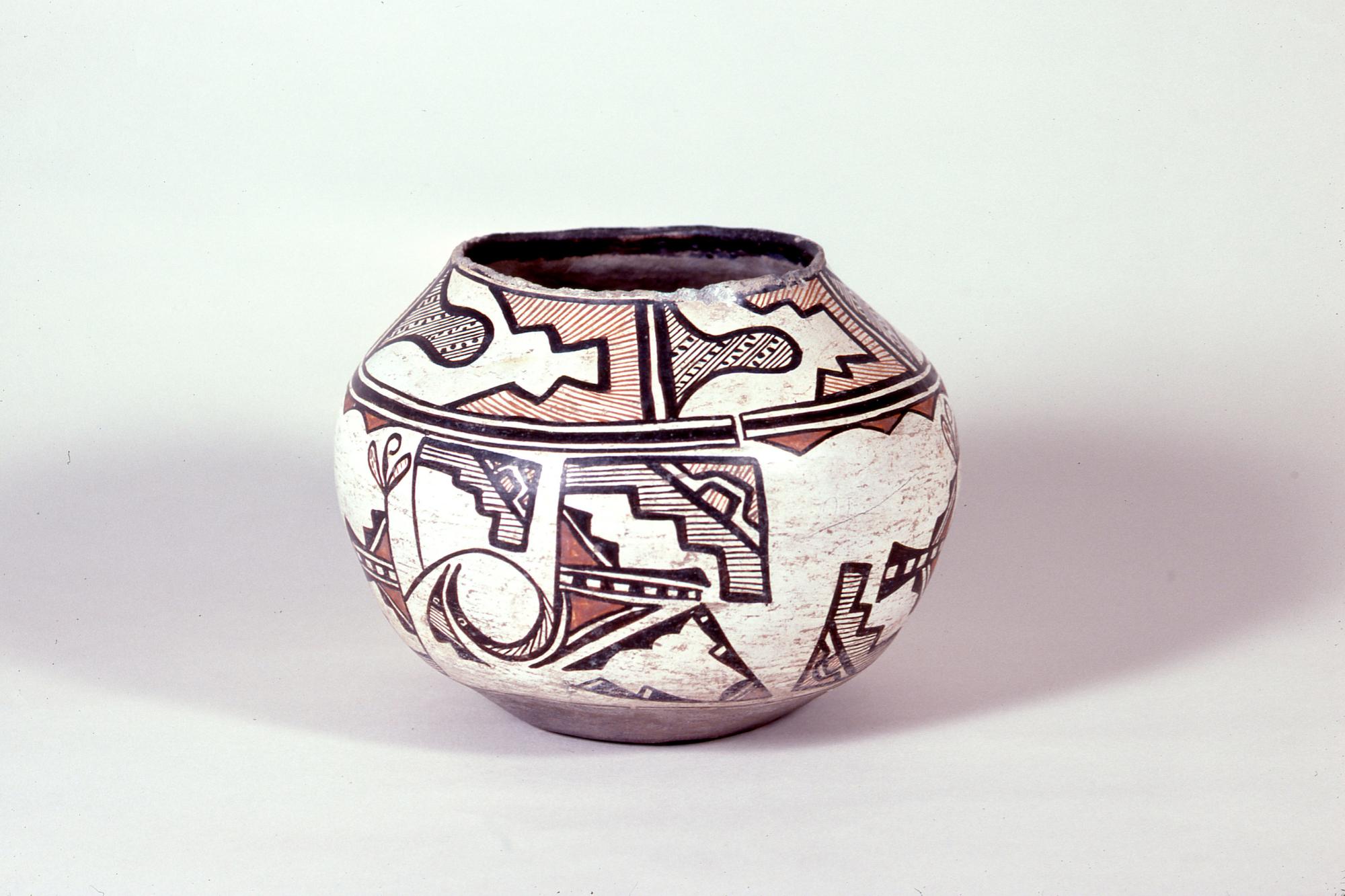
Photograph by Addison Doty. Copyright 2010 School for Advanced Research.
Water jar | K'yabokya de'ele
Date: 1890 - 1910
Artist or Maker: Unknown
Dimensions:
Dimensions: 21.6 × 27.9 cm (8 1/2 × 11 in.)
Weight: 1.8 kg (4 lb.)
Medium: clay | paints
Credit Line: Indian Arts Fund purchase for the permanent collection.
Place Made:
Zuni Pueblo, McKinley County, New Mexico, Southwest, United States, North America
Object Number: IAF.608
Not on view
Tribal Collection Review RemarksJim Enote and Octavius Seowtewa during collection review visit February 17 and 18, 2010 (Events Record “Collection Review: Zuni Tribe, Review 4”): No remarks for this jar.
As per Jim Enote and Octavius Seowtewa during collection review visit Nov. 30 and Dec. 1, 2011 (Events Record “Collection Review: Zuni Tribe, Review 7”): The rim is painted black. It is chipped and has some erosion. There is a thin black line immediately below the rim. The neck is divided into four compartments with repeating designs. One of the compartments is much smaller than the other three. Each compartment design contains a tail and wings. They are filled with red and black rain hatching. The black rain hatching also has dots that may be hail/seeds/planting holes. A triple line with a line break separates the neck from the body designs. The middle line is thick and the top and bottom ones are thin. Red water waves are attached to the bottom line. The body is decorated with three sets of bird-based designs that are similar but not identical. They each contain a bird head at their center, with wings/step clouds, tails, and crests arranged around them. There is a lot of white space around the designs and the three groups do not touch. The wings/step clouds contain black and red rain line hatching. Some of the crests contain spots. A thin double line with a line break separates the body designs from the base. The base is a dark reddish brown with possible efflorescence and does not show much wear.
In one place in the design, there are what look like two bird heads. Mr. Enote explained that his grandmother, who was a potter, told him this represents both sides of the bird's head, presented at once.
The word for a water jar in Zuni is “k'yabokya de'ele,” which translates to “water container vessel” in English. The intended use for these jars was to store and carry water, but they could also be used to store other items.
In Collection(s)
The Indian Arts Research Center, in collaboration with Native American community scholars, strives to present accurate collections records. Records may be updated as new information becomes available and is reviewed with the Native American community having cultural affinity to particular items. Please write to iarc@sarsf.org if you have questions or concerns related to the documentation.


